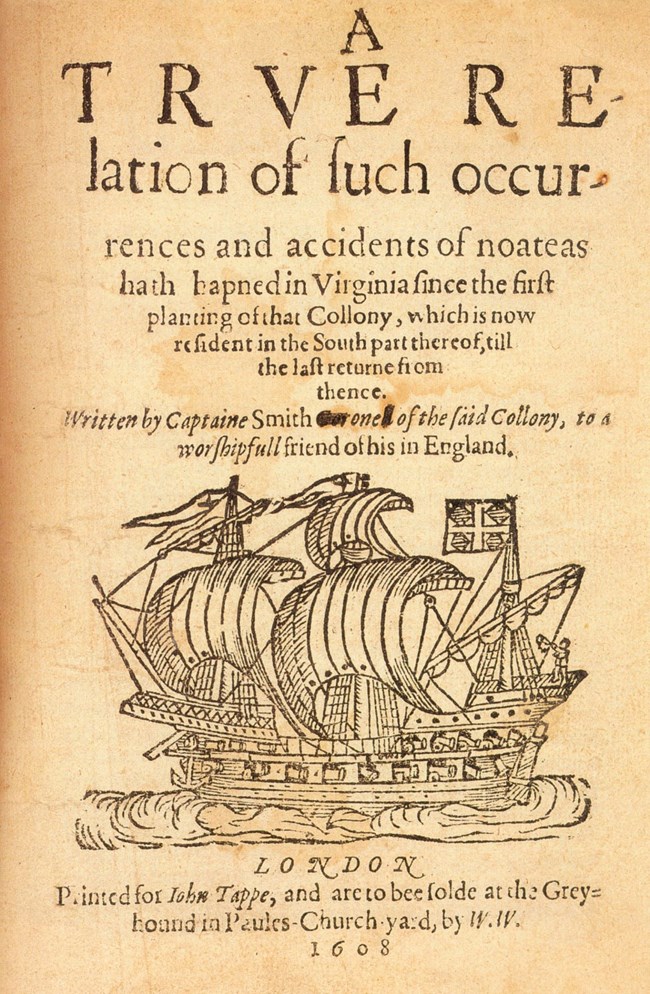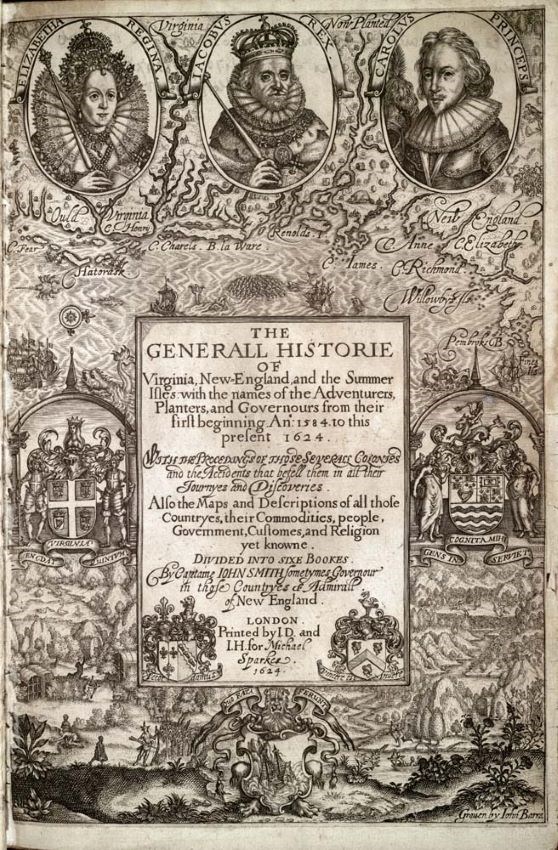Last updated: February 4, 2022
Article
John Smith’s Writings
Captain John Smith's writings offer an eyewitness account of the Chesapeake Bay in 1608. They describe his explorations in detail, recounting where he went, what he saw, and the people he met. Although compelling and informative, his perspective is still a biased one – that of an English explorer in an Indigenous world. His writings introduced the English to this region of the world for the first time and triggered a wave of colonization. He published books in later years that included additional details about his interactions with Native peoples. In recent years, scholars have debated the truthfulness of some of these details. Today, historians value Smith's writings as primary sources.

Early Letters
Captain John Smith's first writings about Jamestown took the form of letters sent to England on a supply ship along with an early map. This account was published as A True Relation of Such Occurrences and Accidents of Noate As Hath Happened in Virginia. This letter accounted for the period between December, 1606 and June 2, 1608, before Smith embarked on his voyages.
A Description of Virginia
Captain Smith and several of the gentlemen on his crew kept notes on nature, geography, people, and events during their time in the Chesapeake Bay, including their 1608 voyages. In 1612, Smith published A Map of Virginia: With a Description of the Countrey, the Commodities, People, Government and Religion. The book provides a map and a narrative that describe the Chesapeake Bay’s geography and the peoples living there. Smith also includes a list of Algonquian words, sections on Native religion and government, and a description of the region’s natural resources and how Native people made use of them.
Later Writings
John Smith published additional writings including The Generall Historie of Virginia (1624) and The True Adventures and Observations of Captain John Smith (1630). These books recount the same incidents described in earlier works but introduce new details and descriptions. Famously, the story of Pocahontas saving Smith’s life was not mentioned in 1608 or in 1612, not appearing in print until 1624. These and other incidents have been called into question. For example, Smith describes being saved from execution by beautiful women around the world at least five times in his writings.

Fact or Fiction?
Historians and archaeologists generally agree that most of what Smith wrote is accurate and truthful to the best of his knowledge. His depictions of places, locations of Indian towns, and accounts of voyages and discoveries have largely been confirmed by other sources, including contemporary writings and later archaeological investigations.
Like other European explorers of his era, however, Smith promoted himself aggressively, probably exaggerating his adventures and enhancing his public image. Later editions of his books contain different versions of some stories, thereby arousing suspicion. His texts are useful, therefore, as a glimpse into the mindset of a European explorer in the early 1600s. They are not only a document of the Chesapeake Bay, but also of the wider context of European colonialism, religion, politics, and more.
It will never be known how accurate Smith's writings are. However, they had a significant effect on the course of American history, fostering interest in the Chesapeake region and triggering further exploration and settlement. This in turn impacted American Indian communities, who were displaced by English colonization.
